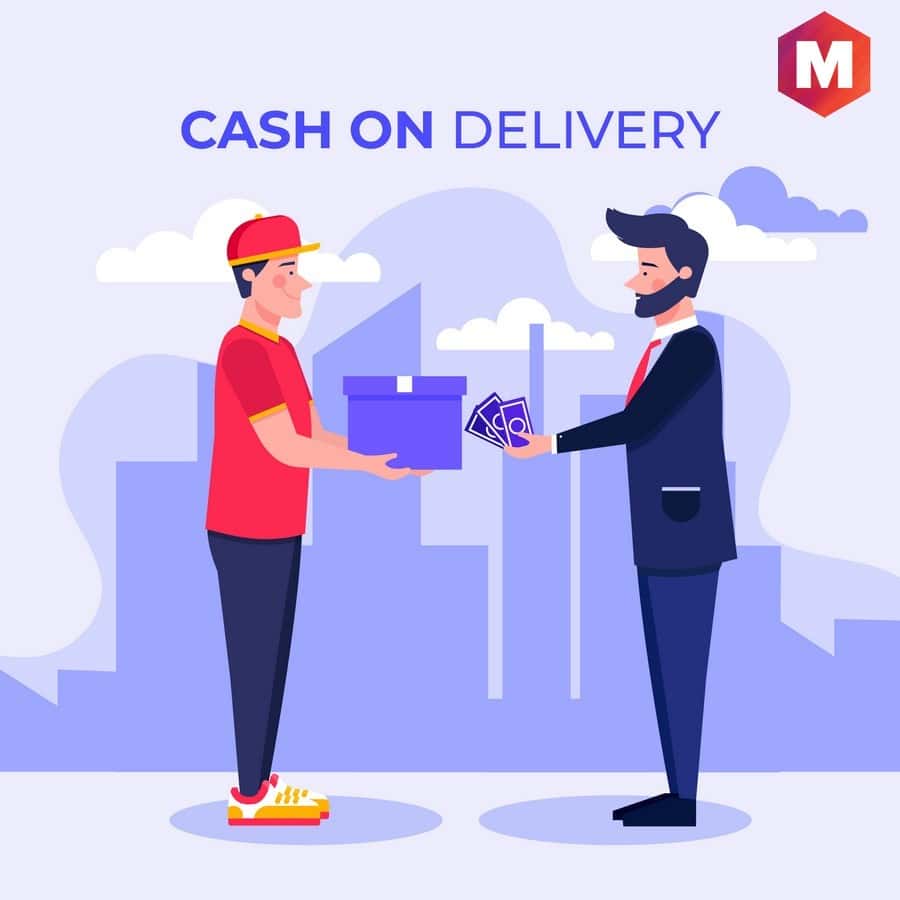Cash on delivery (COD) is a payment method in which payment for an order is collected when the associated product is delivered to the customer. The COD payment terms are generally shared and agreed upon before making the purchase.
In other words, COD takes place when a recipient pays for a product or service when the delivery of the same occurs. It can take a few unique forms and each can influence the bookkeeping or accounting of an organization. It lets customers have the benefit of having extra time to save and arrange the money while COD lets sellers get faster payments.
Table of Contents
What is Cash on Delivery?
Definition: Cash on delivery (COD) is a payment method in which the customer or recipient of a product or service pays the price of that product or service at the time of delivery. COD is likewise understood as the collect on delivery as the delivery might take into consideration money, digital payment, check, etc.
All in all, COD is a strategy for gathering payment that expects clients to pay while taking delivery. CODs are useful in helping suppliers to avoid potential risks from extending credit to customers.
How does Cash on Delivery Work?
The terms and conditions for how a COD customer is supposed to pay the bill will commonly be framed in their agreement with the seller or supplier. At the point when a COD client submits a request, they will choose COD as their preferred payment method.
At the point when their order will arrive, the client will pay the sum owed to the delivery partner of the supplier. Then the logistics partner or logistics company remits the amount to the supplier after deducting the handling charges.
Since cash on delivery clients aren’t paying using a credit card doesn’t mean the supplier or seller will not need to make invoices for them. At the point when deliveries arrive then a printed receipt of the invoice should be attached with it.
Examples of Cash on Delivery
Many b2b companies are involved in collecting payments. Such companies are mainly wholesale distributors who generally sell to retailers. However, in our regular lives, we face so many situations when we opt for COD like picking up a package from a courier, online shopping, receiving Amazon orders, ordering pizza, etc.
How are the payment terms for COD different?
While retailers pay on credit, suppliers ask them to pay on net 30, 60, or 90 terms which imply that buyers are supposed to make payments in the payment period of 30, 60, or 90 days.
But on the other hand, the COD buyers need to make full payment at the time of delivery, otherwise, their order will not be given to them. However, the delivery period for the COD clients will quite often be shorter than clients paying on credit.
Why do businesses offer COD?
Despite having online payment choices and quick bank transfers, many businesses offer the COD facility to their clients. It is so because new businesses can profit from offering COD as it will help them show more dependability to the client by guaranteeing that their order will be delivered and only then payment will be taken.
It lets suppliers target the customer base without credit cards, plus it also targets a customer who does not have sufficient balance in his or her bank account. As such, in case a client has cash but is not in the likelihood to pay online, COD can convert them as well. Many clients are also doubtful of online payments, so they all can be converted through cash on delivery COD.
Now and again, a few customers will demand COD for various reasons like those who do not have sufficient funds not but know that they might get some funds by the time of delivery, and finally, there are customers who find the cash on delivery COD method the most reliable and satisfying one. It also safeguards businesses from buyer identity fraud.
Pros of COD payment option
1. For suppliers
Accepting cash on delivery COD lets suppliers optimize their sales by working with clients they wouldn’t, in any case, offer credit to. As opposed to facing the challenge of offering credit to those clients right away, cash on delivery allows suppliers or sellers to offer them a chance to build their positive perceptions. When suppliers opt for payment at the time of delivery rather than accounts receivable (AR), they enjoy advantages from the shorter payment cycles. Requesting payment at the time of delivery will further decrease DSO or days sales outstanding as well ensure reliable cash flow.
2. For buyers
Cash on delivery enables clients or buyers to manage their cash flow by paying at the time of delivery. COD likewise lets clients with less favorable credit histories work with merchants or suppliers.
Cons of Cash on Delivery
1. For suppliers
Many downsides are also there with COD for suppliers. To begin with, trusting that clients will pay on delivery might make drivers get deferred while making deliveries. Numerous suppliers opted to end COD terms during COVID to restrict contact among clients and delivery staff. COD additionally comes up with a risk of delivery refusal by not accepting the product. This can be particularly terrible when suppliers are shipping perishable merchandise. This will let suppliers lose profit on the returned or ruined products, plus they might also be asked to pay shipping return fees.
In the end, we all understand that COD frequently depends on different online payment methods such as cash as well as checks. Due to this, working with COD involves a lot of manual bookkeeping work for the accounting team. The delivery person is supposed to monitor all the cash and check payments and then give their details to the accounting staff of the supplier who will then physically process and accommodate the payments with the right client accounts. This cumbersome cycle eventually means something bad for the cash flow of the suppliers.
2. For buyers
In case a purchaser has any desire to return any products after paying for them, the process can be quite daunting in some cases because the supplier probably won’t be under any commitment to acknowledge the return. Furthermore, in case the supplier is just prepared to collect money on delivery by means of cash or check, this could restrict purchasers’ capacity to pay on delivery via digital means.
Cash on Delivery vs. Cash in Advance
In cash in advance method, the purchaser pays for a product or service before it is shipped or delivered. It is utilized to eliminate credit risk as well as the risk of non-payment. Suppliers benefit from cash in advance but the buyers risk getting damaged or delayed or different products.
While on the other hand, cash on delivery offers benefits for both the purchaser and the merchant or supplier. In the terms of COD, products are shipped before the payment is made. The cash in advance method is the most widely recognized type of payment for e-commerce, online marketplaces, and global business transactions while COD is preferred by small to medium suppliers or wholesalers.
Cash on Delivery and Invoicing
In case you think that in COD cases, a few parts of the sale process can be skipped then in any case, this isn’t true. Businesses ought to in any case give invoices when a buyer has placed an order as an element of a legal transaction. So, an invoice will be created by mentioning the payment terms.
Conclusion!
To summarise the above, it can be said that the COD is a payment method that has benefits for the buyers as well as suppliers.
For the purchasers without credit, cash on delivery is an advantageous method for purchasing the products that they need while for the suppliers if the products are accepted on the delivery, the payment will be faster.
At last, different payment options that a supplier gives rely upon how much risk it can handle and its ability to deal with inconveniences like returns and late payments.
Now, on a final note, how useful do you rate COD transactions than a bank transfer or electronic payments?

